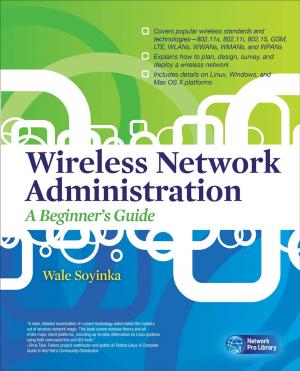24 Deadly Sins of Software Security: Programming Flaws and How to Fix Them
Nonfiction, Computers, Application Software, Computer Security| Author: | Michael Howard, David LeBlanc, John Viega | ISBN: | 9780071626767 |
| Publisher: | Mcgraw-hill | Publication: | September 3, 2009 |
| Imprint: | Language: | English |
| Author: | Michael Howard, David LeBlanc, John Viega |
| ISBN: | 9780071626767 |
| Publisher: | Mcgraw-hill |
| Publication: | September 3, 2009 |
| Imprint: | |
| Language: | English |
"What makes this book so important is that it reflects the experiences of two of the industry's most experienced hands at getting real-world engineers to understand just what they're being asked for when they're asked to write secure code. The book reflects Michael Howard's and David LeBlanc's experience in the trenches working with developers years after code was long since shipped, informing them of problems." --From the Foreword by Dan Kaminsky, Director of Penetration Testing, IOActive
Eradicate the Most Notorious Insecure Designs and Coding Vulnerabilities
Fully updated to cover the latest security issues, 24 Deadly Sins of Software Security reveals the most common design and coding errors and explains how to fix each one-or better yet, avoid them from the start. Michael Howard and David LeBlanc, who teach Microsoft employees and the world how to secure code, have partnered again with John Viega, who uncovered the original 19 deadly programming sins. They have completely revised the book to address the most recent vulnerabilities and have added five brand-new sins. This practical guide covers all platforms, languages, and types of applications. Eliminate these security flaws from your code:
- SQL injection
- Web server- and client-related vulnerabilities
- Use of magic URLs, predictable cookies, and hidden form fields
- Buffer overruns
- Format string problems
- Integer overflows
- C++ catastrophes
- Insecure exception handling
- Command injection
- Failure to handle errors
- Information leakage
- Race conditions
- Poor usability
- Not updating easily
- Executing code with too much privilege
- Failure to protect stored data
- Insecure mobile code
- Use of weak password-based systems
- Weak random numbers
- Using cryptography incorrectly
- Failing to protect network traffic
- Improper use of PKI
- Trusting network name resolution
"What makes this book so important is that it reflects the experiences of two of the industry's most experienced hands at getting real-world engineers to understand just what they're being asked for when they're asked to write secure code. The book reflects Michael Howard's and David LeBlanc's experience in the trenches working with developers years after code was long since shipped, informing them of problems." --From the Foreword by Dan Kaminsky, Director of Penetration Testing, IOActive
Eradicate the Most Notorious Insecure Designs and Coding Vulnerabilities
Fully updated to cover the latest security issues, 24 Deadly Sins of Software Security reveals the most common design and coding errors and explains how to fix each one-or better yet, avoid them from the start. Michael Howard and David LeBlanc, who teach Microsoft employees and the world how to secure code, have partnered again with John Viega, who uncovered the original 19 deadly programming sins. They have completely revised the book to address the most recent vulnerabilities and have added five brand-new sins. This practical guide covers all platforms, languages, and types of applications. Eliminate these security flaws from your code:
- SQL injection
- Web server- and client-related vulnerabilities
- Use of magic URLs, predictable cookies, and hidden form fields
- Buffer overruns
- Format string problems
- Integer overflows
- C++ catastrophes
- Insecure exception handling
- Command injection
- Failure to handle errors
- Information leakage
- Race conditions
- Poor usability
- Not updating easily
- Executing code with too much privilege
- Failure to protect stored data
- Insecure mobile code
- Use of weak password-based systems
- Weak random numbers
- Using cryptography incorrectly
- Failing to protect network traffic
- Improper use of PKI
- Trusting network name resolution















